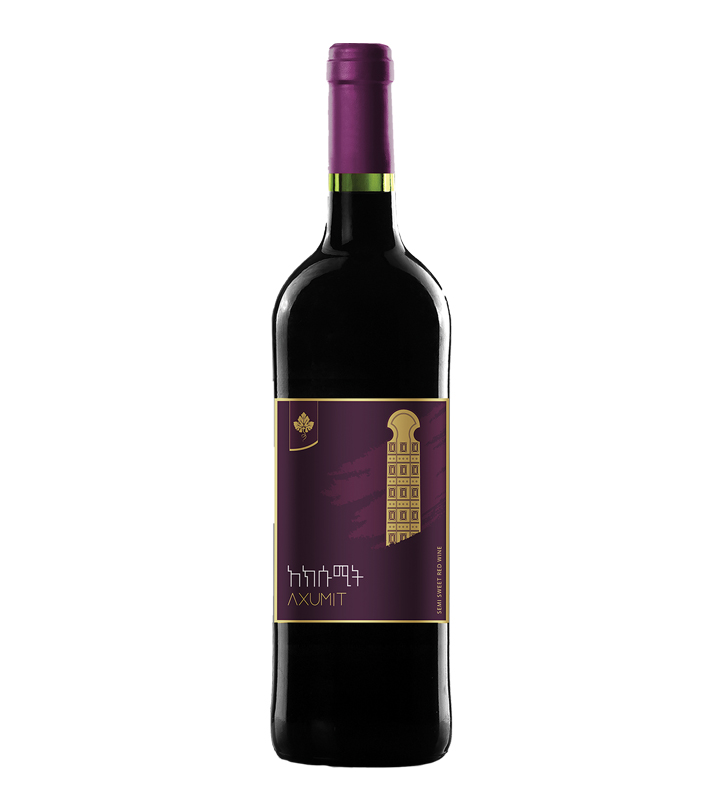Is Your Wine a Beverage or an Knowledge?

With wine that is the comparative of "Continuing Education classes"; the training and discovery in no way ends. Even some sort of casual drinker of wine eventually will arrive at a new point where subjects of "flavor", "taste" and "mouth-feel" will certainly become-the search. Properly, maybe obsession would certainly be the extreme but the encounters with wine will be greatly enhanced whenever there is a spotlight on the scent, flavor and mouth-feel of wine. The question now will become: Are you obtaining a full 100% satisfaction out of your bottle of wine beverages? Try bringing the total experience of that will bottle of wine into the consciousness.
Typically the science behind the reason why we like wines takes a PhD to fully understand, that is why the wine beverages industry is really interested in understanding the science behind wines' taste, flavor, smell, and mouth-feel. One particular of the frontrunners in this research in the U. T. is Dr. Ann Noble an ex - professor at the College or university of California-Davis. Doctor. Noble is the leading expert for the discussion of flavor, aroma and mouth-feel and is the inventor of the Wine beverages Aroma Wheel. One more expert on the chemistry of great wines is Mr. Henry Wedler, a candidate for their PhD in Computational Organic Chemistry. The expertise is typically the chemistry of fine wines relating to be able to the primary senses of olfaction (perception of aromas), in addition to taste (perceived simply by gustation) as nicely as of mouth-feel, perceived from the feeling of touch (nociception).
The original source regarding Dr. Noble yet others and the function in chemistry associated with Wedler yet others, we can begin to be able to explain and know why we including a specific wine at a provided as well as with a meal pairing. It can be explained that wine is definitely not a drinker's beverage like ale; it should get enjoyed as skill. (Although there are various who would argue that will craft beers will be similar to wine in their difficulty. ) Processing why we like specific art is some sort of mental exercise much like appreciating wine art.
There happen to be a plethora associated with famous quotes through famous people regarding the artistry of wines, but without the definitions of style, smell/aromas, and sense of wine within the mouth, it would be truly difficult in order to be precise inside explaining the art of wine. Therefore, the job of Doctor. Noble and Mr. Wedler, amongst some others around the wine and academic entire world, puts words for the music of wines.
In research in this article Dr. Noble added context to the discussion about flavor/taste, aroma, and mouth-feel. "You cannot individual taste, aroma or perhaps mouth-feel and still have any important discussion; the three are inextricably linked, " said Dr. Noble. "Let me prove my point: hold your nose and take a take in of an unidentified beverage and try to define accurately the taste. It is impossible because our brains need the additional references of smell and mouth-feel along with taste. "
Until now it is definitely a fact of which the character of wine is best made clear by its taste, aroma and mouth- feel. We such as certain wines established upon the olfactory processing of these kinds of cues and our own brains reaction to these inputs. To be able to be specific, wines olfactory inputs (aroma compounds) first stimulate our "olfactory bulb". Signals sent by the olfactory bulb to other areas in the human brain, are ultimately included in the prefrontal orbitocortex of the brain together with the input coming from our taste and even mouthfeel receptors. The brain dictates likes plus dislikes of taste/flavors and therefore it can be reprogrammed to change perceptions with further experiences. Remember that first taste involving something we would not like and folks said "it is surely an acquired taste" and after this you like that brie cheese.
AROMA's
Doctor Noble, whilst at UC Davis developed the Davis Wine Aroma Tire which is practically a circular depiction (a pie chart format) of 3 concentric rings radiating from the centre of the wheel graph and or chart. Moving to the outer ring, each piece of typically the pie chart brings more complex descriptors of myriad information of wine's bouquets. The Aroma Steering wheel starts off with 12 simple descriptors that could be known as macro aroma's, plus ends (outer ring) with an extremely defined set of 125 aroma detailed notes to clarify precisely what a person can be smelling in the wine. For illustration, starting off using a top level aroma of vegetation could actually end upward in a small smell that might be since unexpected as- eucalyptus.
The Aroma Tire will enable typically the wine drinker to be precise in analyzing smells in wine and eventually advancement into a point of which Wheel isn't essential to mentally arrange and define scents.
As an enjoyment exercise, obtain a new Wine Aroma Wheel to utilize at a new gathering of close friends for a wine tasting, explain the wheel concept and let others experiment using defining the bouquets they smell throughout their wine regarding choice. The Wine Aroma Wheel is usually available through http://www.winearomawheel.com/.
Obviously, if a person's brain (processing olfactory inputs) says presently there is an smell, of say smoking cigarettes coming through; smoking cigarettes is simply not part associated with the winemaking process. "It is the particular chemical compounds in typically the wine that have interaction with the alcohol and yeast that create the aromas in any wine, " stated Welder. "Further, while wine matures, even in the bottle, and is exposed to typically the cork, wine can easily become a lot more structure in its aromas. Volatiles are mentioned frequently in a 1996 paper composed by Doctor Commendable titled-Taste-Aroma Interactions. These kinds of volatiles in wine include the esters given off by simply the compounds that will create the aromas we love throughout wine.

"The most complicated assimilation of chemical substances on Earth is in wine in addition to human blood, inch says Wedler. Presently there are estimated to become more than a single, 000 compounds inside red wine and the human perception of what the nose are, are translated by a person's-physiological perspective, psychological cosmetics, perceptions and just how our brains have cataloged our activities with taste, nose and mouth experience. "Even each time a man or woman is agitated about a situation, their particular mood can transform the palate and even that impacts typically the aroma and flavor of wine, " commented Wedler. Level being: live in the good mood to savor wine!
The query begging to become asked is: Exactly where do the aroma compounds come by? Based on Dr. Respectable, they come from the particular varietal grape, the particular management of the vineyard, the winemakers' method, aging and "region of origin" or terroir. In serious cases the environment in the vineyard effects the development regarding aromas within the grape and ultimately inside the wine.
There are ongoing discussions about the alcohol levels in today's wine. However, alcoholic beverages does play a part in the aroma composition. Wines associated with higher alcohol are reported by many to be sweeter, in studies regarding model wines, larger alcohol wines have been more bitter. Bottom-line, a winemaker might impact flavor and even aroma by managing alcohol and sweets content.
FLAVOR (TASTE AND AROMA)
Scents are what help to make a person capable to get at wine flavors. "Taste and aroma interactions arise everytime we eat or drink. Standard conditions of usage of foods in addition to beverages result inside of simultaneous perception of aroma and preference in conjunction with tactile feelings (mouth-feel), all which in turn contribute to an general impression of flavour. Tastes can boost apparent intensity of aromas, " writes Doctor. Noble in the woman 1996 report.
Just what makes wine and so enjoyable are the particular sensations of flavour stimuli perceived inside the brain through nasal and dental interaction. "Flavor has been defined while the "psychological presentation of a physiological reaction to an actual stimulus". Therefore, to appreciate flavors in wine presently there must be split and distinct sensations of smell, taste and touch (mouth-feel).
Generally, flavor is related to aroma inside that the varietal and "region or perhaps origin" plays the significant part. There after the winemaker receives involved in managing the tasks: crush, coping with the juice, bouillonnement methods, pressing, getting older (oak, steel, etc. ), blending and even finishing. Finishing is definitely the process ahead of bottling that handle balancing the amount of acid degrees in the wine. After all, almost all people buy wine beverages for the taste aspects and right now there are lots of subsets in the tasks above that impact taste.
Research indicates that will taste and aroma interplay is a learned and a top of the particular mind awareness; it is simply exactly how the brain performs. To illustrate, taste/flavor sets the level for the band of wine's efficiency. The tongue detects only four tastes-bitter, sweet, salt and even sour. To get to the songs of wine (taste and aroma notes) the nasal passages must get the particular notes towards the mind and then the music begins. For this reason, wine need to be dispersed through the mouth. As an aside, tannins carry out not posses any flavors but tannins do contribute to mouth-feel, this will be discussed later.
Just as pointed out in "Taste-Aroma Interactions", without our own nasal cavity plus the nose, around 80% of style will disappear. That can be stated that the ethanol vapors from the newly opened bottle of wine can certainly be off putting wherein the nostril but that will be a passing sensation.
MOUTH-FEEL
Dr . Rich Gawel in the Office of Horticulture, Viticulture and Oenology, University or college of Adelaide, Down under has taken a webpage from UC Davis and developed some sort of Mouth-feel Tasting Tire. His efforts stick to that of Doctor. Noble, in understanding specific terms regarding concisely defining attributes of mouth-feel.
Typically the Mouth-Feel Wheel provides a total involving 68 descriptors associated with Mouth-feel. Some appear to overlay taste/flavor. For instance , the "Irritation" type on the Tyre has a sub class of "spice". Spice is also the category on the Aroma Wheel.
Texture is another way to know Mouth-feel plus really defines how the tongue acknowledges low alcohol, fruit taste, sweet, sour, etc. and typically the heft of a new red wine compared to white wine. Knowing wine is a new volitional choice that will is not actually a skill, that comes from experiences on the palette, in the nose area as well as in the brain. "95% of wines' flavor is nasal/olfactory effects processed inside of the brain, very well says Wedler. Wines is art and you can enjoy art with out a lot of explanations.
Ultimately, the mind dictates taste.
Lastly, the study of chemistry, psychology, physiology and perceptions INCREASES our appreciation involving wine taste/flavor, aroma and mouth-feel. A wine drinker (reds or whites) will become more coherent about descriptions of their favorite wines because their vocabulary boosts. Dr. Noble's Wine beverage Aroma Wheel helps to enhance our vocabulary. As we just about all know, an individual's vocabulary improves together with age and education and learning and that seems in order to also be an undeniable fact with wine; a lot more experiences come using some cognitive compression of facts. Pleasure of wine is not ephemeral.
"To take wine with your mouth is to savor a droplet of the river associated with history. "
